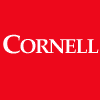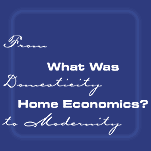
What Was Home Economics?
At the turn of the 20th century, home economics was a critical pathway into higher education for American women, largely associated with co-educational land grant institutions such as Cornell. From its inception, collegiate home economics was multidisciplinary and integrative with an emphasis on science applied to the real world of the home, families and communities.
In the early decades of the 20th century, home economists had links to the revitalization of agriculture and rural communities, but also to Progressive Era programs in cities. By the 1920s, home economists at Cornell were best known for research in human nutrition and child development, but their work in fields such as fiber science, design and consumer economics made them central to the growth of the consumer economy as well. Throughout the first half of the twentieth century, collegiate programs prepared thousands of women for public school teaching but many also had careers in the extension service, state and federal governments, industry, hospitals, restaurants and hotels. But by the late 1950s and the early 1960s, broad changes in American women's economics and social roles made collegiate education in home economics seem "old fashioned," an image that did not do justice to its rich history.
In celebration of the New York State College of Human Ecology's Centennial, this exhibition will emphasize how home economics at Cornell University, served as a critical bridge from domesticity in the 19th century to modernity in the 20th century and will attempt to answer the question: What was home economics?
To begin, select a link at the right.
|
|||||||||
|
Copyright © 2001 Division
of Rare & Manuscript Collections For reference questions, send
mail to: rareref@cornell.edu
|
